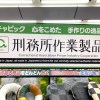Plans to use traditional Japanese kintsugi techniques to make them look as good as new, or perhaps even better.
Residents of Kumamoto are still picking up the pieces after being rocked by a series of destructive earthquakes, and no doubt many of those pieces are shattered ceramics. Traditional Japanese table settings feature a multitude of small plates and bowls for individual dishes and diners, and the country’s rich tea and flower arrangement cultures mean that most homes also have a collection of ceramic cups, pots, and vases.
While you could outfit your entire home with stuff from the 100 yen store, some of the ceramics broken in the Kumamoto quakes are antiques or heirlooms with considerable sentimental value. Still, a cracked container has no function anymore, so unless victims of the disaster want sake dribbling down their hands every time they pour themselves a drink, it’s time to throw those fractured cups away along with the rest of their damaged kitchenware right?
Actually, it’s not, thanks to people like Kunio Nakamura. Nakamura runs the Roku Jigen cafe in Tokyo, a gathering place for lovers of literature and music. Another passion of Nakamura’s is kintsugi, a traditional Japanese pottery repair method.
地震で割れた大切な器の修復を頼まれることが多い(親の形見や家宝など)落ち着いたら熊本や大分にも「うつわの修復ボランティア」に伺うつもりです。どうしても大切な器は捨てないで保管しといて下さい。 pic.twitter.com/ArRIfKejNk
— ナカムラクニオ Kunio Nakamura (@6jigen) April 18, 2016
Kintsugi is often translated as “golden joinery.” However, the word could also be interpreted as “golden succession,” which gives an insight into the philosophy behind it, which accepts that after enough use, pottery is going to get cracked and broken. Kintsugi celebrates those character-enhancing fractures by patching the pieces back together with bonding lacquer mixed with gold or other eye-catching precious metals.
As a lover of the arts, Nakamura has been putting his kintsugi skills to use helping others for years. To this day, he repairs pieces damaged in the 2011 earthquake that devastated Japan’s Tohoku region.
東日本大震災で割れたうつわの修復をまだまだ作業中ですが、大きな部分が欠損すると直すのが難しくなります。大切なうつわは、陶片を同じビニール袋にいれて保管して頂けると助かります。 pic.twitter.com/LAQoy7eTBt
— ナカムラクニオ Kunio Nakamura (@6jigen) April 18, 2016
Following last week’s Kumamoto earthquakes, Nakamura has been sending out tweets reminding people not to hastily toss out their cracked and broken pottery. Instead, he encourages them to tape the smaller pieces to the larger ones and store the bundle in a plastic bag. Once the more pressing recovery operations settle down, Nakamura himself plans to travel to homes in Kumamoto and offer his services, free of charge, to those with broken ceramics.
▼ Nakamura is also skilled in kyonaoshi, in which pottery is repaired in a way which minimizes the visibility of the damage sustained.
割れた場所を同じ色で修復する「共直し」も出来ます。欠片を本体にテープで貼って置くと便利です。特に黒っぽい器なら綺麗に修復可能です。 pic.twitter.com/H2F4eUalnT
— ナカムラクニオ Kunio Nakamura (@6jigen) April 18, 2016
Still, past a certain extent of damage pottery becomes unrepairable. Even then, though, Nakamura implores people to keep the broken pieces. While the dish may never be made whole again, the fragments can be recrafted into other items, such as the chopstick rests seen here.
大切なうつわが粉々に砕けてしまったら、陶片を呼び継ぎして箸置きをつくったりも出来ます。欠片も何か役に立つので保存しといて下さい(うつわの修復ボランティアに伺う予定です) pic.twitter.com/xWB2lcLQC0
— ナカムラクニオ Kunio Nakamura (@6jigen) April 18, 2016
So just like it’s important for the people of Kumamoto to hang on to hope in these trying times, so too should they hang on to their broken ceramics.
Source: Togech, Twitter/@6jigen

 Lacquerware supplier to emperor of Japan and Pokémon team up for new tableware
Lacquerware supplier to emperor of Japan and Pokémon team up for new tableware Is it rude to sing along at concerts in Japan? We ask a pro musician for his take
Is it rude to sing along at concerts in Japan? We ask a pro musician for his take Japan may add Japanese language proficiency, lifestyle classes to permanent foreign resident requirements
Japan may add Japanese language proficiency, lifestyle classes to permanent foreign resident requirements Dragon Quest Burgers and Slime drinks are coming to McDonald’s Japan【Video】
Dragon Quest Burgers and Slime drinks are coming to McDonald’s Japan【Video】 Starbucks Japan releases new zodiac chilled cup drink for 2026
Starbucks Japan releases new zodiac chilled cup drink for 2026 Lacquerware supplier to emperor of Japan and Pokémon team up for new tableware
Lacquerware supplier to emperor of Japan and Pokémon team up for new tableware Is it rude to sing along at concerts in Japan? We ask a pro musician for his take
Is it rude to sing along at concerts in Japan? We ask a pro musician for his take Japan may add Japanese language proficiency, lifestyle classes to permanent foreign resident requirements
Japan may add Japanese language proficiency, lifestyle classes to permanent foreign resident requirements Dragon Quest Burgers and Slime drinks are coming to McDonald’s Japan【Video】
Dragon Quest Burgers and Slime drinks are coming to McDonald’s Japan【Video】 Starbucks Japan releases new zodiac chilled cup drink for 2026
Starbucks Japan releases new zodiac chilled cup drink for 2026 Real Buddhist monk plays Super Mario Bros., recites prayers every time he kills an enemy【Video】
Real Buddhist monk plays Super Mario Bros., recites prayers every time he kills an enemy【Video】 This overlooked neighborhood east of Tokyo is awesome in many ways, left us with just one regret
This overlooked neighborhood east of Tokyo is awesome in many ways, left us with just one regret Anti-NHK activist recommends “magic words” that will drive away fee collectors instantly
Anti-NHK activist recommends “magic words” that will drive away fee collectors instantly Akihabara pop-up shop sells goods made by Japanese prison inmates
Akihabara pop-up shop sells goods made by Japanese prison inmates 7-Eleven Japan starts new temporary luggage storage service in over 300 branches
7-Eleven Japan starts new temporary luggage storage service in over 300 branches Starbucks teams up with 166-year-old Kyoto doll maker for Year of the Horse decorations【Photos】
Starbucks teams up with 166-year-old Kyoto doll maker for Year of the Horse decorations【Photos】 Disillusionment at Tsukiji’s tourist-target prices led us to a great ramen restaurant in Tokyo
Disillusionment at Tsukiji’s tourist-target prices led us to a great ramen restaurant in Tokyo Tokyo’s Tsukiji sushi neighborhood asks tour groups to stay away for the rest of the month
Tokyo’s Tsukiji sushi neighborhood asks tour groups to stay away for the rest of the month Street Fighter Hadouken Churros to be launched and eaten in Tokyo, Okami pudding on offer too
Street Fighter Hadouken Churros to be launched and eaten in Tokyo, Okami pudding on offer too Is this the most relaxing Starbucks in Japan?
Is this the most relaxing Starbucks in Japan? Starbucks on a Shinkansen bullet train platform: 6 tips for using the automated store in Japan
Starbucks on a Shinkansen bullet train platform: 6 tips for using the automated store in Japan Large amount of supposed human organs left in Osaka marketplace
Large amount of supposed human organs left in Osaka marketplace Japan’s human washing machines will go on sale to general public, demos to be held in Tokyo
Japan’s human washing machines will go on sale to general public, demos to be held in Tokyo Japanese train company is letting fans buy its actual ticket gates for their homes
Japanese train company is letting fans buy its actual ticket gates for their homes Tokyo considering law requiring more trash cans following litter increase in heavily touristed area
Tokyo considering law requiring more trash cans following litter increase in heavily touristed area Is China’s don’t-go-to-Japan warning affecting tourist crowds in Tokyo’s Asakusa neighborhood?
Is China’s don’t-go-to-Japan warning affecting tourist crowds in Tokyo’s Asakusa neighborhood? Nintendo’s Kirby now delivering orders at Kura Sushi restaurants, but not in Japan
Nintendo’s Kirby now delivering orders at Kura Sushi restaurants, but not in Japan Tokyo event lets you travel back in time, for free, to celebrate 100 years since Showa era start
Tokyo event lets you travel back in time, for free, to celebrate 100 years since Showa era start Survey asks foreign tourists what bothered them in Japan, more than half gave same answer
Survey asks foreign tourists what bothered them in Japan, more than half gave same answer Japan’s deadliest food claims more victims, but why do people keep eating it for New Year’s?
Japan’s deadliest food claims more victims, but why do people keep eating it for New Year’s? We deeply regret going into this tunnel on our walk in the mountains of Japan
We deeply regret going into this tunnel on our walk in the mountains of Japan Studio Ghibli releases Kodama forest spirits from Princess Mononoke to light up your home
Studio Ghibli releases Kodama forest spirits from Princess Mononoke to light up your home Major Japanese hotel chain says reservations via overseas booking sites may not be valid
Major Japanese hotel chain says reservations via overseas booking sites may not be valid Put sesame oil in your coffee? Japanese maker says it’s the best way to start your day【Taste test】
Put sesame oil in your coffee? Japanese maker says it’s the best way to start your day【Taste test】 The top 10 annoying foreign tourist behaviors on trains, as chosen by Japanese people【Survey】
The top 10 annoying foreign tourist behaviors on trains, as chosen by Japanese people【Survey】 No more using real katana for tourism activities, Japan’s National Police Agency says
No more using real katana for tourism activities, Japan’s National Police Agency says Starbucks Japan reveals new sakura drinkware collection, inspired by evening cherry blossoms
Starbucks Japan reveals new sakura drinkware collection, inspired by evening cherry blossoms Real Buddhist monk plays Super Mario Bros., recites prayers every time he kills an enemy【Video】
Real Buddhist monk plays Super Mario Bros., recites prayers every time he kills an enemy【Video】 This overlooked neighborhood east of Tokyo is awesome in many ways, left us with just one regret
This overlooked neighborhood east of Tokyo is awesome in many ways, left us with just one regret Anti-NHK activist recommends “magic words” that will drive away fee collectors instantly
Anti-NHK activist recommends “magic words” that will drive away fee collectors instantly Akihabara pop-up shop sells goods made by Japanese prison inmates
Akihabara pop-up shop sells goods made by Japanese prison inmates 7-Eleven Japan starts new temporary luggage storage service in over 300 branches
7-Eleven Japan starts new temporary luggage storage service in over 300 branches Kyoto samurai house wants to share its history of seppuku, torture and gold coins with visitors
Kyoto samurai house wants to share its history of seppuku, torture and gold coins with visitors Is Kyoto’s raindrop cake as good as the original from Yamanashi?
Is Kyoto’s raindrop cake as good as the original from Yamanashi? Our reporter takes her 71-year-old mother to a visual kei concert for the first time
Our reporter takes her 71-year-old mother to a visual kei concert for the first time Starbucks Japan unveils New Year’s drinkware range for 2021
Starbucks Japan unveils New Year’s drinkware range for 2021 We visit Japan’s new Sriracha vending machines to get our spicy red-sauce fix【Pics】
We visit Japan’s new Sriracha vending machines to get our spicy red-sauce fix【Pics】 Lawson changes its iconic egg sandwich, makes it bigger but smaller at the same time
Lawson changes its iconic egg sandwich, makes it bigger but smaller at the same time Chikan molester runs away from Japanese schoolgirls at train station in Japan【Video】
Chikan molester runs away from Japanese schoolgirls at train station in Japan【Video】 We zapped up some tasty hot sandwiches in the microwave with 3COINS’ new gadget from Japan
We zapped up some tasty hot sandwiches in the microwave with 3COINS’ new gadget from Japan
Leave a Reply